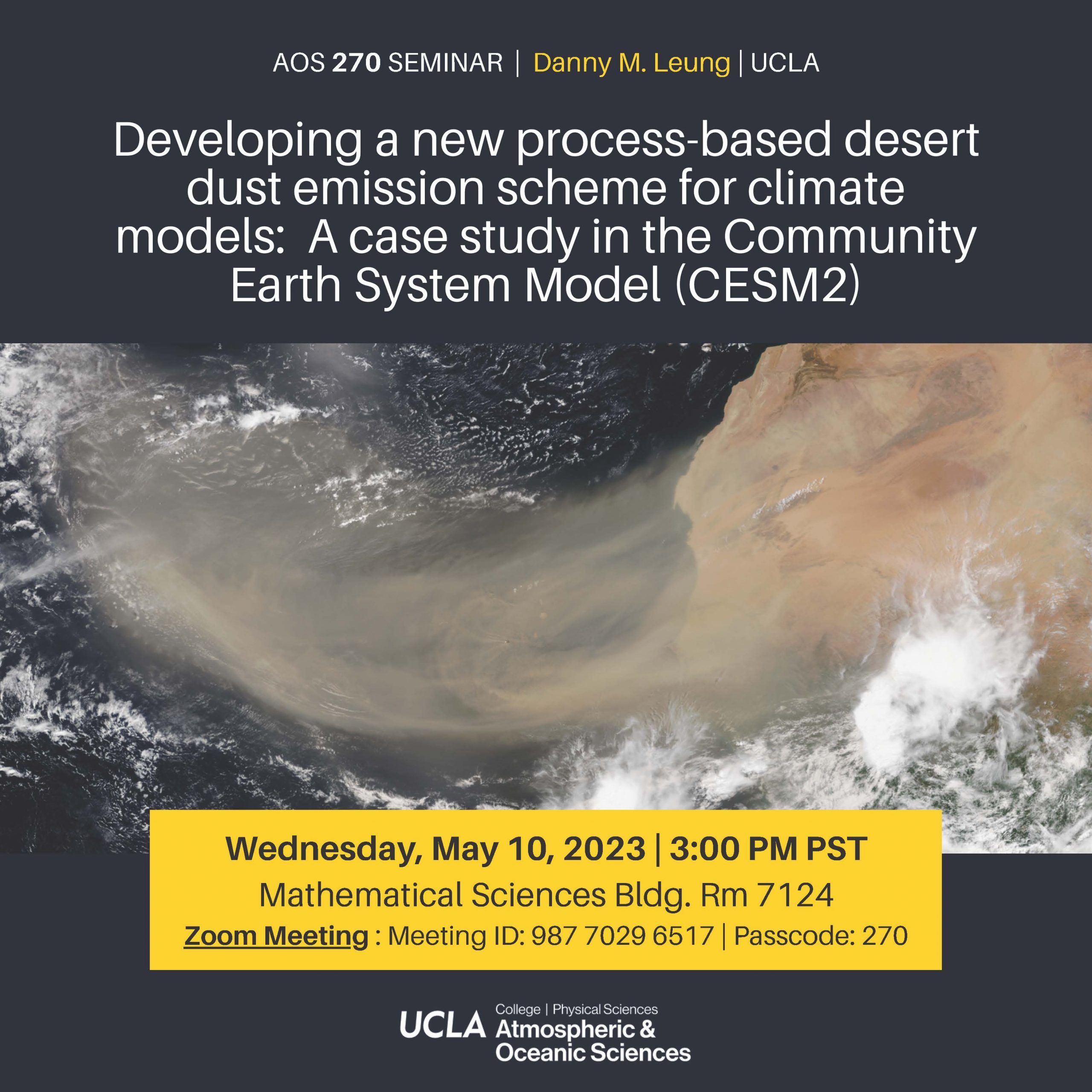Abstract:
Desert dust is an important aerosol and air pollutant that poses threat to human health and produces large uncertainties in assessments of Earth’s radiative budget and global climate change. However, current global climate model (GCM) simulations show that modeled dust poorly captures the observed dust in both spatial and temporal variability, which inhibits accurate assessments of aerosol radiative effects. Furthermore, dust emission is a local-scale process that varies on scales of ~ 1 km or less, and thus current GCMs with typical grid-scale of > 100 km inherently have difficulties capturing dust spatial distribution and its sensitivity to local-scale meteorological variability. To tackle these problems, we develop a new dust emission scheme for GCMs that includes several more land-surface aeolian processes, and use the Community Earth System Model (CESM2) as a case study. First, we account for the dissipation of surface wind momentum by surface roughness elements included plants and rocks, which reduce the wind momentum exerted on the bare soil surface over deserts. Second, we account for the effects of soil particle size distribution (PSD) on dust emission threshold by implementing a realistic soil median diameter inferred from a compilation of soil PSD observations. Third, we account for intermittent dust emissions induced by boundary-layer turbulence using a recently proposed saltation parameterization, which further couples dust with boundary-layer dynamics. With more physical processes, CESM2 dust emissions match better against assimilated emission datasets in spatial variability and seasonality. Modeled atmospheric dust variables, including dust aerosol optical depth (DAOD) and dust deposition, also show better agreement in both spatial and temporal correlations with satellite-derived and ground-based DAOD measurements. Our results suggest that including more physical processes into climate models can lessen bias, improve simulation results, and eliminate the use of empirical source masks in existing dust schemes. Therefore, our dust emission scheme could improve assessments of dust impacts on the Earth system and future climate changes.

